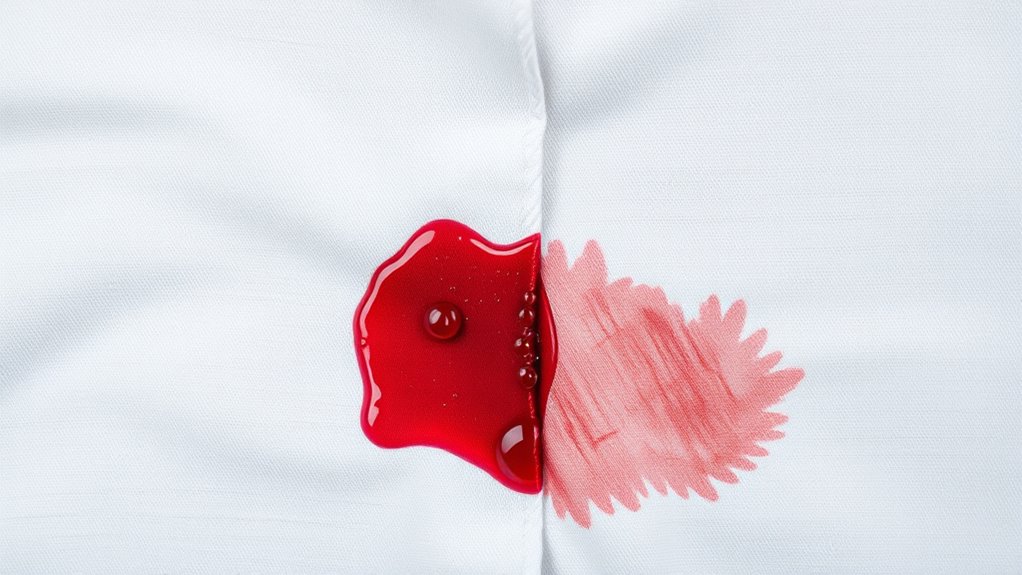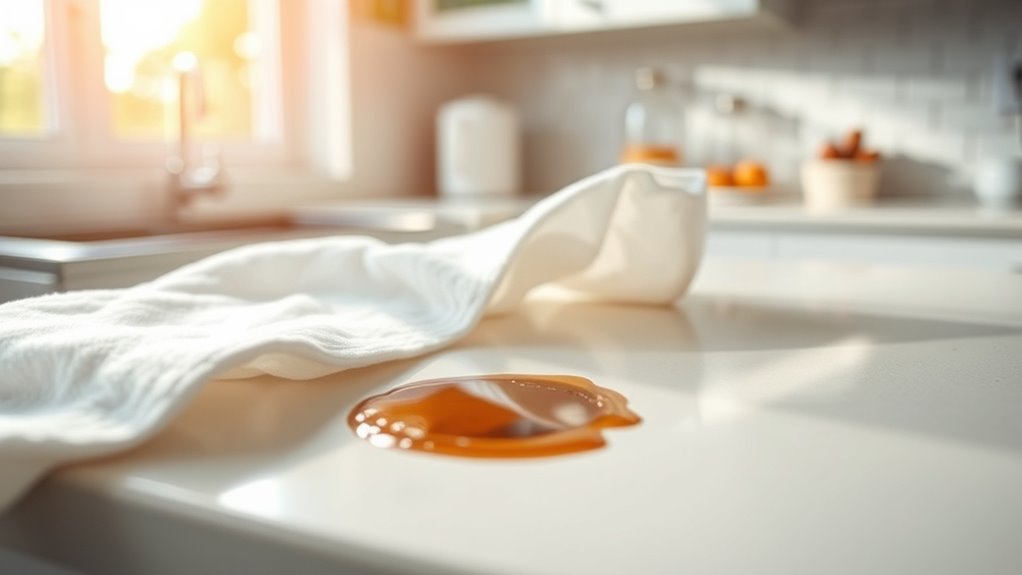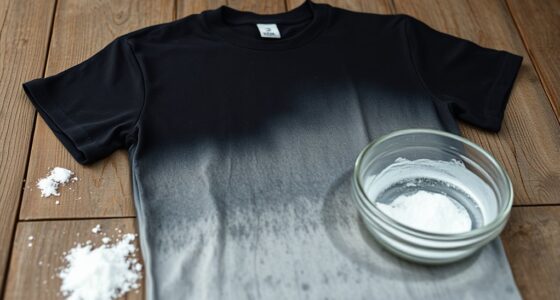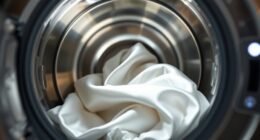When it comes to stain removal, acting quickly is your best bet. Enzymes in cleaners work best before stains set or bond deeply with fabrics. Warm, properly pH-ed water helps enzymes break down stubborn molecules faster. The sooner you treat a stain, the easier it is to target the molecules before they become harder to remove. Keep these tips in mind, and you’ll strengthen your stain-fighting skills—more details await those who look deeper.
Key Takeaways
- Enzymes rapidly break down stain molecules if applied early, preventing stains from setting or bonding firmly.
- Prompt treatment ensures enzymes work within their optimal temperature and pH ranges, increasing effectiveness.
- Delayed cleaning allows stains to oxidize or dry, making enzymatic breakdown much more difficult.
- Early stain removal leverages enzyme activity before environmental factors diminish their efficiency.
- Timing allows enzyme cleaners to maximize their biological action, often outperforming chemical detergents alone.

Stains can seem like stubborn obstacles, but understanding the science behind their removal can make the process much easier. When you’re tackling a stain, knowing how enzymes work and the importance of pH balance can considerably improve your chances of success. Enzyme action is a key player here; enzymes are biological catalysts that speed up the breakdown of complex molecules found in many stains. For example, proteases target proteins in food stains like blood or sweat, while amylases break down starches in pasta or potato spills. When you treat a stain with an enzyme-based cleaner, you’re essentially giving these biological agents the tools they need to digest and loosen the stain’s molecules, making removal easier.
Additionally, the temperature at which you treat the stain can influence enzyme activity, with warm water generally enhancing their effectiveness. Timing is critical because enzymes are most effective within specific pH ranges. Most enzyme cleaners perform best in a neutral to slightly alkaline pH, around 7 to 9. If the pH is too acidic or too alkaline, enzyme activity diminishes, and the stain may not break down as efficiently. This is where understanding pH balance becomes crucial. If you’re pre-treating a stain, using a solution that maintains the right pH ensures enzymes can do their job unhindered. For instance, adding an enzyme cleaner to a stain early, before it sets or dries out, allows the enzymes to penetrate and work on the stain molecules more effectively.
Furthermore, the timing of stain removal plays a crucial role in how well these enzymes perform. The sooner you address a stain, the less chance it has to set into the fabric or surface, making enzyme action more effective. If you wait too long, the stain can oxidize or bond more firmly with the material, making enzyme activity less impactful. Quick action allows enzymes to target the stain molecules before they become more resistant. Additionally, most enzyme cleaners are formulated to be active at room temperature, but warm water can enhance enzyme activity, speeding up the process. Understanding enzyme efficiency and how it relates to stain removal can help optimize your cleaning strategy.
Frequently Asked Questions
Can Natural Remedies Outperform Commercial Stain Removers?
Natural remedies can sometimes outperform commercial products, especially with fresh stains. You might find that options like baking soda or vinegar work quickly and gently, saving you money and avoiding harsh chemicals. However, commercial products are formulated for tough stains and may deliver more consistent results. Your best approach depends on the stain type and fabric. Testing a small area first helps determine if natural remedies are enough for your needs.
How Does Water Temperature Impact Stain Removal Effectiveness?
Water temperature considerably impacts stain removal because it influences how well stains penetrate fabric fibers. Hot water helps break down grease and oils, making stains easier to lift, while cold water is gentler on delicate fabrics and better for removing protein-based stains like blood. You should choose the right water temperature based on the stain type, as it enhances stain penetration and improves overall cleaning effectiveness.
Are There Specific Stains That Timing Cannot Help?
Certain stains, especially those with complex chemical reactions like ink or dye-based colors, may not respond well to timing alone. For these, waiting too long can allow the stain to set further, making removal more difficult. The complexity of the stain’s chemical makeup means that you need specialized treatments rather than just focusing on timing. So, for stubborn or highly reactive stains, act quickly and consider targeted cleaning solutions.
Does Fabric Type Influence the Importance of Timing?
You should consider fabric sensitivity and stain longevity when timing stain removal. Delicate fabrics like silk or wool require prompt treatment because they can be easily damaged, making quick action more critical. Also, some stains set deeper over time, especially on certain fabrics. So, understanding your fabric type helps you decide how fast you need to act, ensuring effective stain removal without harming the material.
What Are Common Mistakes That Reduce Stain Removal Success?
You often make mistakes that hurt stain removal, like ignoring pre-treatment strategies or delaying action. Rushing to wash without treating stains first lets them set, making removal harder. You might also forget stain prevention techniques, such as blotting spills immediately or using cold water for fresh stains. These errors reduce your chances of success, so act quickly with proper pre-treatment and employ effective stain prevention methods to keep your clothes spotless.
Conclusion
Remember, timing is your secret weapon in stain removal. Think of a stain like a little rebel quickly spreading its ink across your fabric—if you act fast, you can catch it before it takes hold. I once spilled red wine and soaked it immediately; the stain vanished like a mirage. Don’t wait for the stain to settle in—act promptly, and you’ll see how your quick response beats even the strongest detergent every time.









